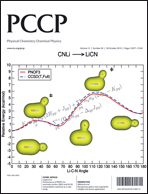Nanostructured materials are governed by their surface chemical properties. This is strikingly reflected by np-Au. This material can be generated by corrosion of bulk Ag–Au alloys. Based on a self-organisation process, a 3 dimensional sponge like gold structure evolves with ligaments in the range of only a few tens of nanometers. Due to its continuous porosity, the material can be penetrated by gases which then adsorb and interact with the surface. In this perspective we will review potential applications of np-Au resulting from this effect, namely heterogeneous gas phase catalysis, surface chemistry driven actuation, and adsorbate controlled stability of the nanostructure. We will summarize the current knowledge about the low temperature oxidation of CO as well as the highly selective oxidation of methanol. Furthermore, we will address the question how surface chemistry can influence the material properties itself. In particular, we will deal with (a) the actuation of np-Au by the reversible oxidation of its surface using ozone and (b) the adsorbate controlled coarsening of ligaments, using annealing experiments under ozone or inert gas atmosphere.

You have access to this article
 Please wait while we load your content...
Something went wrong. Try again?
Please wait while we load your content...
Something went wrong. Try again?


 Please wait while we load your content...
Please wait while we load your content...